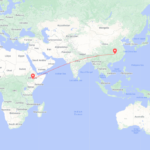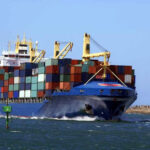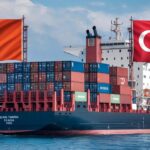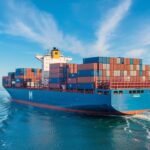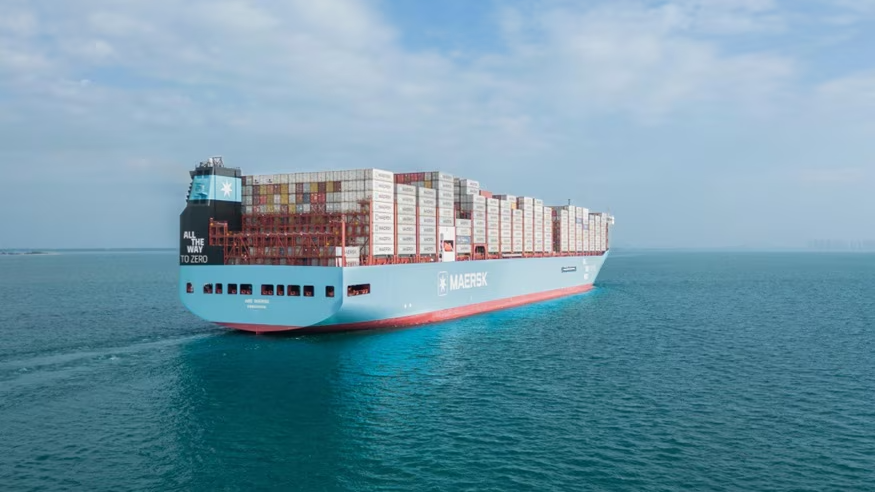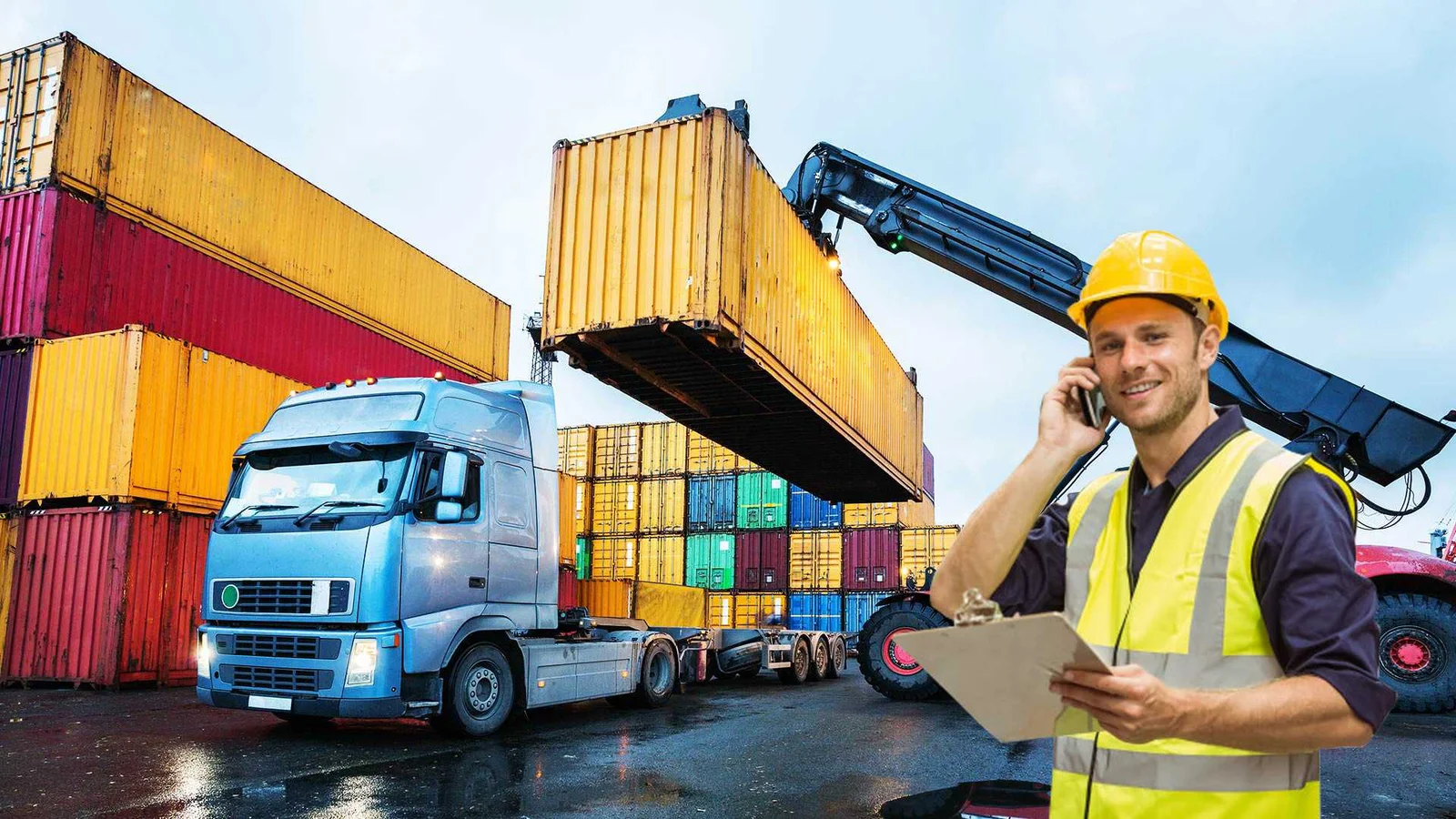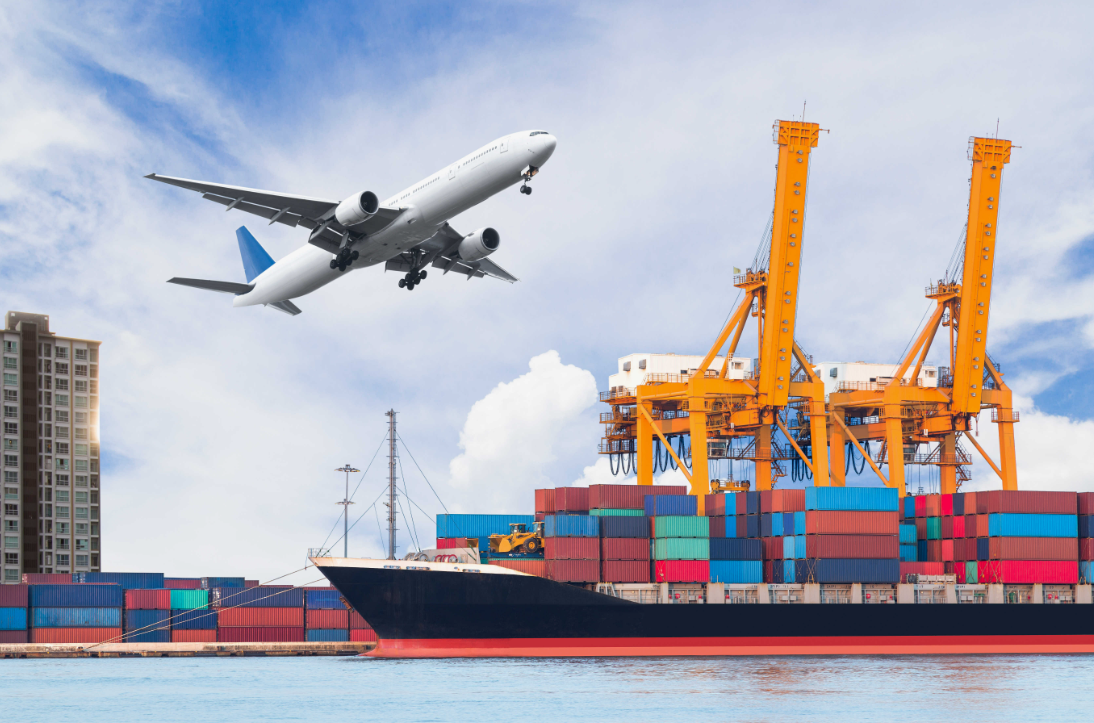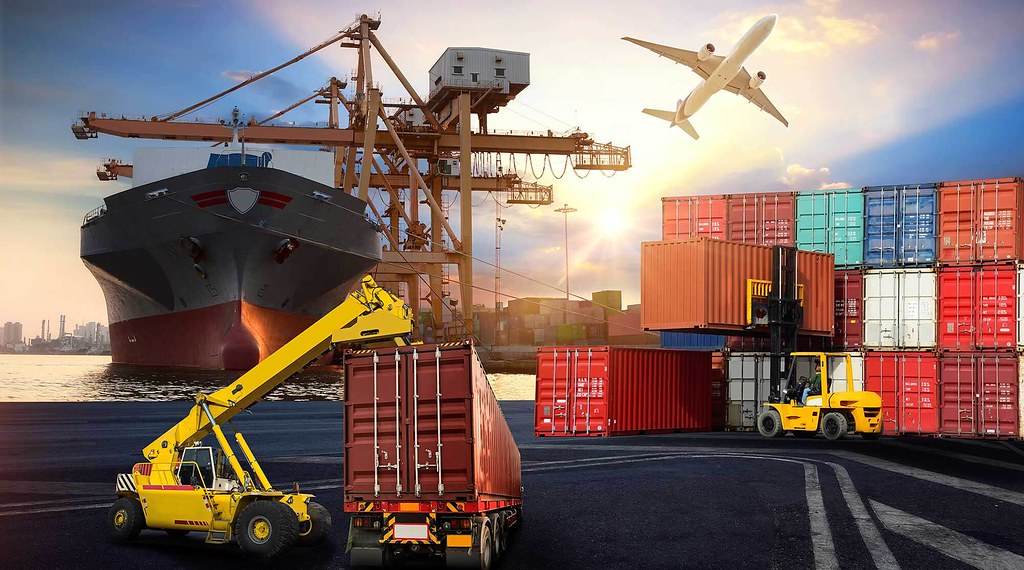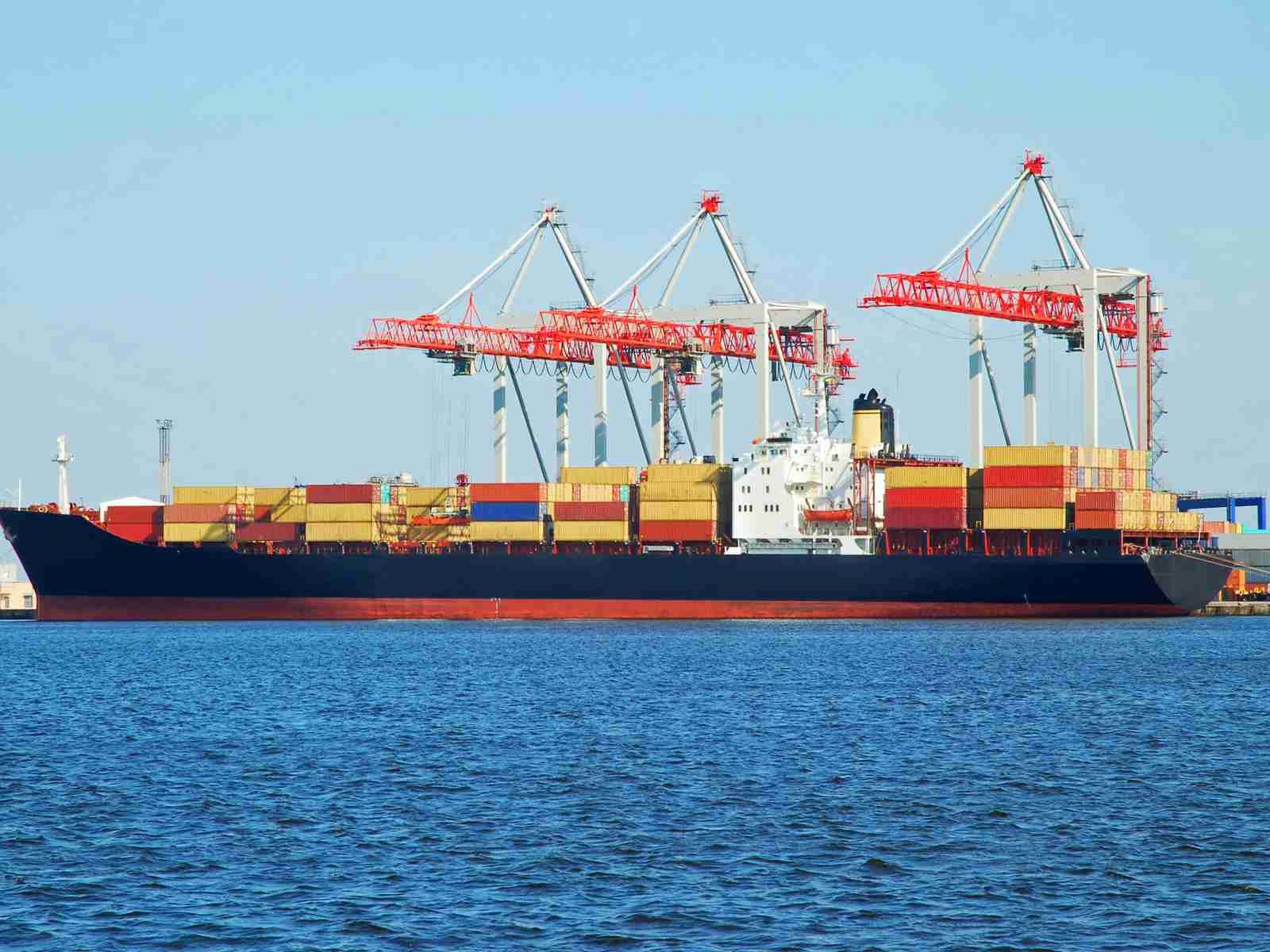In recent years, the trade relationship between China and Ethiopia has flourished, opening new avenues for businesses eager to tap into one of Africa’s fastest-growing economies. As demand for diverse products, ranging from machinery to textiles, continues to rise, efficient logistics become paramount. Sea freight has emerged as a preferred transportation method, celebrated for its cost-effectiveness and ability to accommodate large volumes. With the added benefits of lower shipping costs compared to air freight and a reduced environmental footprint, sea freight is an ideal choice for companies looking to navigate the complexities of international trade. This guide explores the intricacies of sea freight shipping from China to Ethiopia, providing insights into shipping options, key ports, processes, and strategies to optimize logistics effectively.
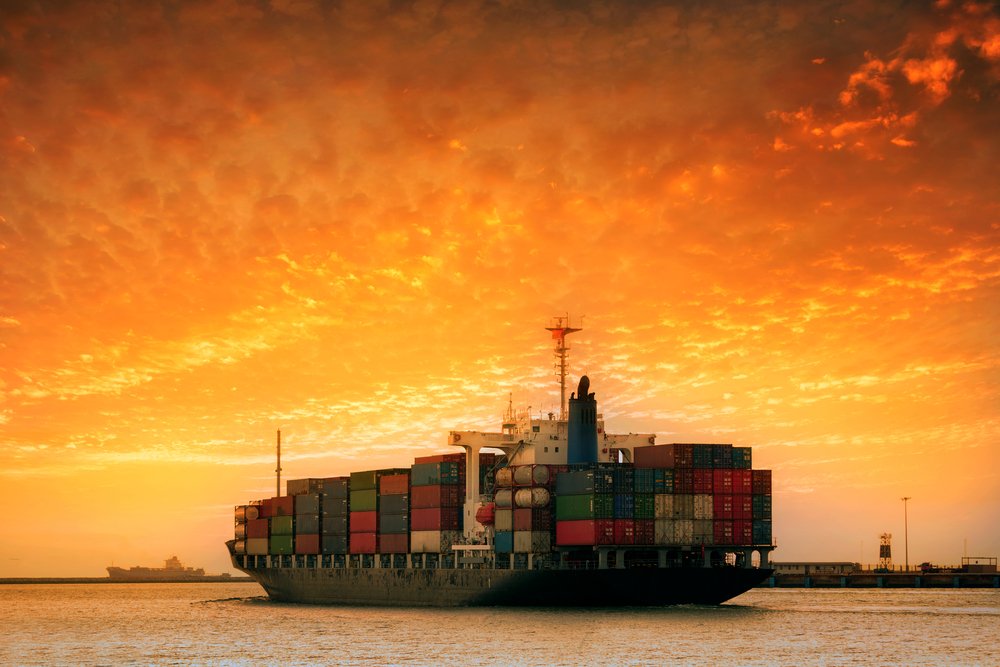
Understanding Sea Freight Options
When it comes to shipping goods from China to Ethiopia via sea freight, it is essential to understand the primary options available: Full Container Load (FCL) and Less-than-Container Load (LCL). Each of these options comes with its own set of advantages and considerations, which can significantly impact both costs and shipping timelines.
Full Container Load (FCL) Shipping
FCL shipping is a logistics method where a single shipper occupies the entire container for their goods. This option is particularly advantageous for businesses that require substantial quantities of products to be shipped.
- Benefits of FCL Shipping
- Cost Efficiency: Although the upfront cost may be higher, businesses that ship large quantities can benefit from lower per-unit shipping costs when utilizing the full capacity of a container. This cost efficiency is especially beneficial for long-term shipments.
- Reduced Transit Time: FCL shipments typically have faster transit times. Since the container is exclusive to one shipper, it does not require additional stops to unload or load goods from multiple shippers.
- Enhanced Security: When a single shipper occupies the entire container, the risk of damage or theft is minimized, providing peace of mind regarding the safety of the shipment.
- Factors Affecting FCL Shipping Costs
- Container Size and Type: Costs vary depending on whether a standard 20-foot or 40-foot container is used. Specific cargo types may also require specialized containers (e.g., refrigerated containers).
- Port Fees and Customs Duties: Different ports in Ethiopia may have varying fee structures, and customs regulations may impact the overall shipping costs.
- Seasonal Demand: Fluctuations in demand due to peak shipping seasons can influence freight rates, making it essential for businesses to plan their shipments accordingly.
Less-than-Container Load (LCL) Shipping
LCL shipping is an ideal solution for businesses that do not have enough goods to fill an entire container. With this method, multiple shipments from various shippers are consolidated into one container.
- Advantages of LCL Shipping
- Flexibility: LCL allows businesses to ship smaller quantities, making it easier for startups or small companies to enter the market without incurring high upfront costs.
- Cost Savings for Smaller Shipments: For shippers with smaller volumes, LCL can be more cost-effective than booking an entire FCL, particularly for infrequent shipments.
- Access to Global Trade Routes: LCL shipping provides access to a wide range of shipping routes without the need for significant upfront investment in container space.
- Considerations for LCL Shipping
- Longer Transit Times: Since LCL shipments involve consolidating multiple shippers’ goods, transit times may increase due to additional loading and unloading procedures.
- Potential for Increased Risk: Sharing container space with other shipments may slightly increase the risk of damage or loss. Proper packaging and insurance are vital to mitigate this risk.
- Additional Costs: While LCL may save costs for smaller shipments, additional fees such as handling charges at the port and consolidation fees may apply, making it essential for shippers to evaluate their overall expenses.
Summary Comparison Table of FCL and LCL Shipping
| Aspect | Full Container Load (FCL) | Less-than-Container Load (LCL) |
|---|---|---|
| Cost Structure | Higher upfront cost, lower per-unit cost | Lower upfront cost, potential higher per-unit cost |
| Transit Time | Generally faster | Typically longer due to consolidation |
| Security | Higher security | Potentially lower security |
| Volume Requirement | Requires full container volume | Allows for smaller shipments |
| Flexibility | Less flexible | More flexible for smaller quantities |
| Additional Costs | Fewer additional costs | May incur additional handling fees |
Understanding these options allows businesses to make informed decisions about their logistics strategy when importing goods from China to Ethiopia. Whether opting for FCL or LCL, partner with a reliable freight forwarder like Dantful International Logistics to ensure a smooth shipping process tailored to your specific needs. With their expertise in customs clearance, warehouse services, and comprehensive shipping solutions, they can help streamline your international logistics operations efficiently.
Top Chinese Seaports for Exports to Ethiopia
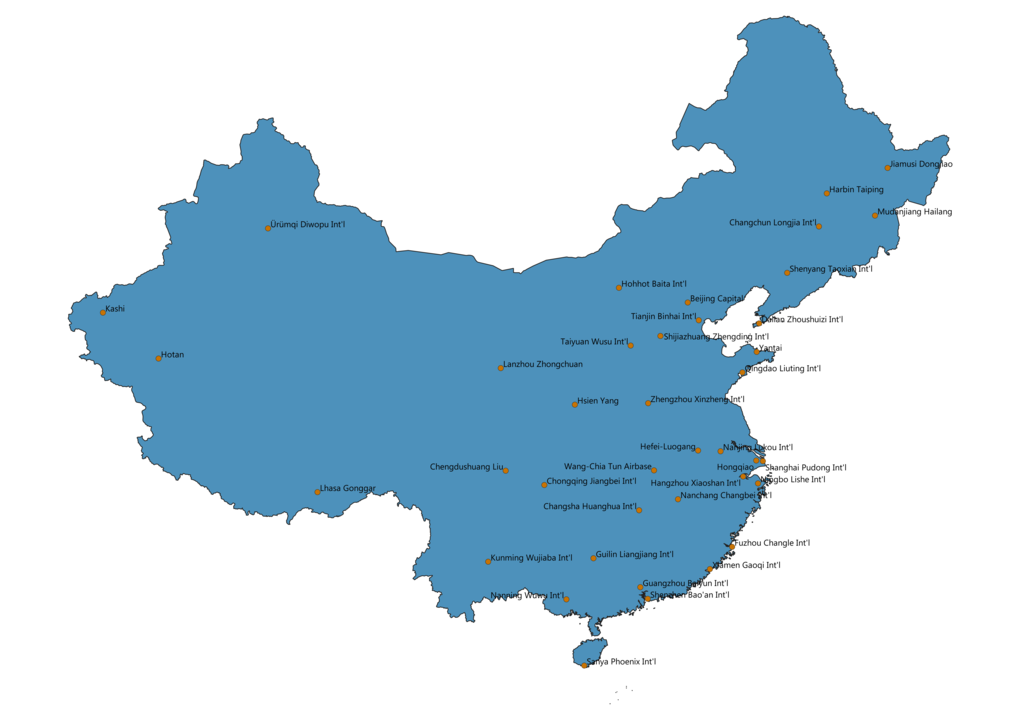
When considering the most efficient routes for shipping goods from China to Ethiopia, it’s essential to identify the key Chinese seaports that facilitate international trade. The following are the top Chinese seaports renowned for their export capabilities to Ethiopia:
Shanghai
As one of the world’s busiest ports, Shanghai serves as a pivotal hub for international shipping. It boasts advanced terminal facilities and a comprehensive logistics network, making it an ideal choice for exporters.
- Strengths: High container throughput, well-established connections to major shipping lines, and efficient customs processes contribute to its reputation as a leading export port.
- Volume of Goods: Shanghai handles a significant portion of China’s exports, providing ample shipping options for a variety of goods.
Shenzhen
Located in Guangdong province, Shenzhen is not only a technological hub but also a crucial port for exporting goods, especially electronics.
- Advantages: Proximity to manufacturing centers, reducing transportation times and costs for exporters. Its multiple terminals cater to various shipment types, including FCL and LCL.
- Growth Potential: The port’s rapid expansion and modernization initiatives enhance its capability to manage increasing trade volumes.
Ningbo-Zhoushan
Ningbo-Zhoushan is one of the largest ports by cargo tonnage in the world. It facilitates a vast array of shipping services, making it an attractive option for businesses exporting to Ethiopia.
- Key Features: Strong inland transport networks, efficient logistics systems, and a significant number of shipping routes to Africa.
- Diverse Capacity: The port handles a wide range of cargo types, from bulk goods to containerized shipments.
Guangzhou
Guangzhou, situated near the South China Sea, serves as an essential gateway for trade with Africa. Its strategic location enhances accessibility for exporters looking to ship goods to Ethiopia.
- Logistical Network: Well-developed transportation infrastructure encompasses road, rail, and air, facilitating seamless connections for exporters.
- Import-Export Balance: The port is equipped to handle both imports and exports, making it a versatile option for businesses engaged in international trade.
Qingdao
Located in Shandong province, Qingdao is an important seaport known for its efficiency and capacity to handle large volumes of cargo.
- Infrastructure: The port is equipped with modern facilities and advanced container handling technologies, enhancing operational efficiency.
- Market Reach: Qingdao serves as a key export point for a range of industries, from machinery to textiles, targeting markets in Africa, including Ethiopia.
Tianjin
Tianjin is another significant seaport that plays a vital role in China’s export strategies, particularly for northern regions.
- Accessibility: Its strategic location near Beijing facilitates easy access to major consumer markets, making it a preferred choice for exporters.
- Comprehensive Services: Tianjin offers a full range of shipping services, including customs clearance, insurance services, and handling of both FCL and LCL cargo.
READ MORE:
- Shipping From China To Algeria
- Shipping From China To Angola
- Shipping From China To Morocco
- Shipping From China To Nigeria
- Shipping From China To Kenya
- Shipping From China To Tanzania
- Shipping From China To South Africa
Main Ethiopia Seaports for Imports
Ethiopia is a landlocked country, reliant on neighboring ports for its imports. The following are the primary seaports utilized by Ethiopian businesses for receiving goods:
Djibouti Port
The port of Djibouti is the main gateway for Ethiopian trade, accounting for approximately 90% of the country’s imports. Its strategic location near the Red Sea allows for quick access to international shipping routes.
- Efficiency: Djibouti has made significant investments in its port infrastructure, resulting in improved container handling capabilities and reduced turnaround times for cargo ships.
- Logistics Hub: The port acts as a logistical hub for landlocked Ethiopia, offering an extensive network of road and rail connections to various parts of the country.
Port Sudan
Port Sudan serves as another alternative for Ethiopian imports, particularly for goods destined for eastern Ethiopia. This port provides access to the Red Sea and has facilities for handling various cargo types.
- Regional Connectivity: While it’s less utilized than Djibouti, Port Sudan offers another point of entry for goods, especially with its strategic location along the Red Sea coast.
- Import Diversification: It allows Ethiopian businesses to diversify their import sources, reducing dependency on a single port.
Berbera Port
Located in Somaliland, Berbera Port is gaining popularity among Ethiopian importers due to its strategic location and development initiatives aimed at enhancing its capacity.
- Emerging Opportunities: Recent investments in infrastructure are increasing its capability to handle larger volumes of goods, thus becoming an attractive alternative for Ethiopian businesses.
- Geographic Advantage: Berbera’s proximity to Ethiopian border towns allows for faster transportation of goods into the country.
Mombasa Port
Mombasa Port in Kenya is another significant entry point for Ethiopian imports, especially for businesses located in southern Ethiopia.
- Well-Established: Mombasa has a long history as a major shipping port in East Africa, serving a diverse range of commodities.
- Logistical Challenges: While it provides additional options for imports, logistical challenges such as longer transit times and customs clearance may arise, making it essential for businesses to plan shipments accordingly.
Exploring these ports provides essential insight for Ethiopian businesses involved in international trade, allowing them to optimize their logistics strategies and improve supply chain efficiency. Collaborating with experienced freight forwarders like Dantful International Logistics can further enhance this process, ensuring smooth customs clearance and effective transportation solutions tailored to each business’s unique needs.
You may be interested in the following related articles:
- Shipping From China To Cote d’Ivoire
- Shipping From China To Djibouti
- Shipping From China To Senegal
- Shipping From China To Sudan
- Shipping From China To Tunisia
Sea Freight Shipping Process
The sea freight shipping process is a multi-step operation that involves careful planning and coordination to ensure the timely delivery of goods from China to Ethiopia. Understanding each stage of this process can help businesses optimize their logistics strategies and mitigate potential delays.
Booking and Documentation
The first step in the sea freight process involves booking the shipment with a freight forwarder, such as Dantful International Logistics. This stage requires several key pieces of documentation:
- Booking Confirmation: The freight forwarder issues a booking confirmation once the details of the shipment are finalized. This includes information on the shipping schedule, container type, and destination.
- Bill of Lading (BOL): This essential document serves as a receipt for the goods and a contract between the shipper and the carrier. It includes vital information such as the description of the goods, shipping details, and terms of transportation.
- Commercial Invoice: This document outlines the transaction between the seller and buyer, detailing the items shipped, their value, and payment terms.
- Packing List: The packing list provides a comprehensive inventory of the cargo, stating the contents of each container, including weight and dimensions.
A complete set of documentation is crucial for smooth operations throughout the shipping process, ensuring that all parties are clear about their responsibilities.
Container Loading and Sealing
Once the booking is confirmed and documentation is prepared, the next step is loading the cargo into containers. This stage involves:
- Container Selection: Choosing the appropriate container type (FCL or LCL) based on the volume and type of goods being shipped. Freight forwarders can provide guidance on the best container options.
- Loading Process: Proper loading is essential to prevent damage during transit. It involves carefully arranging the cargo, balancing weight distribution, and using appropriate packing materials.
- Sealing the Container: After loading, the container is securely sealed to ensure safety and prevent tampering. The seal number is recorded and included in the shipping documents for tracking purposes.
This meticulous process helps minimize the risk of damage or loss of goods during transit.
Ocean Transportation
Once the cargo is loaded and sealed, it is ready for ocean transportation. This phase encompasses:
- Vessel Departure: The container is transported to the port of shipment, where it is loaded onto a cargo vessel. Regular updates on vessel schedules and potential delays are essential during this stage.
- Transit Time: Depending on the route and shipping conditions, the transit time can vary. Businesses should factor in this duration when planning their inventory and supply chain management.
- Tracking: Many freight forwarders offer tracking services that allow shippers to monitor their cargo in real time, providing peace of mind and enabling timely interventions if issues arise.
Customs Clearance in Ethiopia
Upon arrival at the destination port, the cargo must undergo customs clearance. This critical step involves:
- Documentation Submission: All necessary documents, including the Bill of Lading, commercial invoice, and packing list, must be submitted to Ethiopian customs authorities.
- Assessment of Duties and Taxes: Customs officials assess the cargo to determine applicable duties and taxes. Understanding the local customs regulations and tariffs is essential to avoid unexpected costs or delays.
- Inspection: In some cases, customs authorities may conduct physical inspections of the cargo to ensure compliance with regulations. Timely communication between the shipper and customs is essential to expedite this process.
Successfully navigating customs clearance is vital for ensuring that goods are released and available for final delivery.
Final Delivery to Destination
After clearing customs, the final step is the delivery of the goods to the designated destination within Ethiopia. This stage includes:
- Transportation Arrangements: Freight forwarders often coordinate transportation from the port to the final delivery point. This may involve truck services to transfer the cargo safely and efficiently.
- Delivery Scheduling: Proper coordination helps ensure that the cargo arrives at the destination on time. Businesses should communicate their requirements clearly to determine the best delivery schedule.
- Confirmation of Receipt: Upon delivery, the recipient confirms receipt of the cargo, completing the shipping process. Documentation should be maintained for records and future reference.
By understanding the entire sea freight shipping process, businesses can better manage their logistics and enhance operational efficiency when importing goods from China to Ethiopia.
Factors Affecting Sea Freight Costs
Several factors influence the overall costs associated with shipping goods via sea freight from China to Ethiopia. Awareness of these factors can aid businesses in budgeting effectively and optimizing their logistics strategies.
Container Size and Type
The size and type of the container significantly impact shipping costs. Options include:
- Standard Containers: Commonly used for FCL shipments, such as 20-foot and 40-foot containers, which have different capacities and price points.
- Specialized Containers: Refrigerated or open-top containers may incur higher costs due to their specialized nature and handling requirements.
Businesses should evaluate their shipping requirements and choose the most suitable container option to avoid unnecessary expenses.
Shipping Route and Distance
The shipping route chosen for transportation affects both cost and transit time:
- Direct Routes: Shorter, direct shipping routes often result in lower costs. However, they may not always be available for specific destinations.
- Indirect Routes: Longer shipping routes or those with multiple stops can lead to increased transportation costs and extended delivery times.
Analyzing potential shipping routes can help businesses make informed decisions about their logistics.
Fuel Prices and Surcharges
Fuel prices directly impact shipping costs, as they contribute to overall operational expenses for shipping lines. Fluctuations in fuel prices can lead to additional surcharges, which may be passed on to customers.
- Bunker Adjustment Factor (BAF): Shipping companies may apply a BAF to cover rising fuel costs. Understanding this factor is essential for accurate budgeting.
Customs Duties and Taxes
Customs duties and taxes imposed by Ethiopian authorities can considerably affect the overall shipping costs. These charges vary based on:
- Cargo Classification: Different goods are subject to distinct tariff rates. Understanding the classification can help businesses anticipate potential costs.
- Declared Value: The assessed customs value of the goods, along with applicable duties, can influence the overall shipping expenses.
Working with a knowledgeable freight forwarder can help businesses navigate customs regulations and estimate duties accurately.
Insurance and Handling Fees
Insurance is another critical factor in sea freight costs.
- Cargo Insurance: Protecting goods during transit is essential, especially for high-value items. Insurance premiums vary based on cargo value and transportation risks.
- Handling Fees: Shipping companies and port authorities typically charge handling fees for loading, unloading, and managing cargo throughout the shipping process. These fees can vary based on the port and services required.
Awareness of these factors enables businesses to plan for and manage their sea freight costs effectively when importing goods from China to Ethiopia. By partnering with a trusted freight forwarder, such as Dantful International Logistics, businesses can receive tailored advice and gain insights into cost-effective shipping solutions.
Tips for Optimizing Sea Freight From China to Ethiopia
Successfully optimizing sea freight operations from China to Ethiopia involves several strategic considerations. Implementing best practices can lead to cost savings, improved transit times, and enhanced overall efficiency in your logistics processes.
Choosing the Right Shipping Partner
Selecting an experienced and reliable shipping partner is crucial for ensuring smooth operations. When evaluating potential partners, consider the following:
- Industry Expertise: Look for a freight forwarder with extensive experience in handling shipments to Ethiopia. They should be familiar with the unique challenges and opportunities of this route.
- Network and Connections: A well-established network can facilitate faster customs clearance and better access to various shipping lanes, reducing transit times.
- Service Range: Ensure that the forwarder provides comprehensive services, including customs clearance, insurance, and warehouse services, to meet all your logistics needs.
Proper Packaging and Labeling
Effective packaging is essential to protect goods during transit and comply with shipping regulations:
- Durable Materials: Utilize high-quality packaging materials that can withstand the rigors of sea transport, such as moisture and rough handling.
- Clear Labeling: Ensure that all packages are correctly labeled with necessary information, including destination, handling instructions, and contents. This reduces the risk of delays or misplacement.
- Weight Distribution: Pack containers efficiently to balance the weight, preventing damage during transport and ensuring compliance with shipping regulations regarding load limits.
Timely Communication with Stakeholders
Open communication among all stakeholders involved in the shipping process is vital for success:
- Regular Updates: Maintain consistent communication with your freight forwarder, suppliers, and local agents. This ensures that everyone is informed about shipment status and potential delays.
- Collaboration: Foster collaborative relationships with all parties to streamline logistics operations and address any issues that arise promptly.
- Feedback Loops: Establish a process for gathering feedback from all stakeholders after each shipment to identify areas for improvement.
Staying Updated on Regulations and Requirements
International shipping is subject to various regulations that can change frequently. Staying informed is crucial to avoid compliance issues:
- Customs Regulations: Regularly review customs regulations and documentation requirements for both China and Ethiopia to ensure compliance, minimizing the risk of delays or fines.
- Trade Agreements: Be aware of any trade agreements or tariff changes that may affect shipping costs and procedures.
- Shipping Line Policies: Keep informed about any changes in policies or requirements from your chosen shipping lines to adapt your logistics strategies accordingly.
Choosing the Right Sea Freight Forwarder
Selecting the right sea freight forwarder is a critical step in optimizing your shipping operations. A reliable partner can enhance efficiency, reduce costs, and mitigate risks associated with international shipping.
Qualities of a Reliable Freight Forwarder
When assessing potential freight forwarders, look for the following qualities:
- Experience and Reputation: A forwarder with a solid track record and industry experience is more likely to handle shipments effectively and navigate potential challenges.
- Customer Service: Exceptional customer support ensures quick responses to inquiries and effective problem resolution.
- Transparency: Reliable forwarders should provide clear and upfront pricing, avoiding hidden fees that could impact your budget.
- Technology Utilization: Forwarders that use advanced technology for tracking shipments and managing documentation will enhance the efficiency of your logistics processes.
Questions to Ask When Selecting a Forwarder
Before making a decision, consider asking the following questions:
- What services do you offer? Ensure that the forwarder provides the specific logistics services you require, such as DDP shipping services, customs clearance, and warehousing.
- Can you provide references? Ask for testimonials or references from businesses that have previously worked with the forwarder.
- What is your experience with shipping to Ethiopia? Understanding their familiarity with the Ethiopian market can provide insights into their ability to manage your shipments effectively.
- How do you handle customs clearance? Inquire about their processes for ensuring compliance with customs regulations and any potential challenges they foresee.
Why Choose Dantful Logistics
Dantful International Logistics stands out as a premier choice for businesses seeking a reliable freight forwarding partner for shipments to Ethiopia. Here’s why:
- Expertise in International Shipping: Dantful has extensive experience in managing sea freight logistics, ensuring that your goods are handled efficiently and securely throughout the shipping process.
- Comprehensive Service Offerings: From customs clearance to insurance services and warehouse solutions, Dantful provides a one-stop solution for all your logistics needs.
- Strong Network: With established relationships with shipping lines and local agents, Dantful can facilitate faster transit times and customs clearance, enhancing the overall efficiency of your shipments.
- Transparent Pricing: Dantful offers clear pricing structures with no hidden fees, enabling businesses to budget effectively for their shipping operations.
By partnering with Dantful International Logistics, businesses can leverage expertise and resources to optimize their sea freight operations from China to Ethiopia, ensuring a smooth and successful shipping experience.
Dantful International Logistics Services:
- Dantful Ocean Freight Services
- Air Freight From China
- Amazon FBA Freight Forwarding
- WAREHOUSE Services
- One-Stop Customs Clearance Solution
- Cargo Insurance Services in China
- DDP Shipping Services By Dantful Logistics
- Out of Gauge Cargo Transportation Shipping Services
FAQs
1. What is the difference between Full Container Load (FCL) and Less-than-Container Load (LCL) shipping?
FCL shipping means that one shipper occupies an entire container, making it ideal for large shipments. This option generally offers lower per-unit costs and faster transit times. On the other hand, LCL shipping allows multiple shippers to share a container, which is suitable for smaller shipments. While LCL can be more cost-effective for infrequent small shipments, it usually comes with longer transit times and potential risks due to sharing container space.
2. What are the main seaports in China for exporting goods to Ethiopia?
Key Chinese seaports for exporting to Ethiopia include Shanghai, Shenzhen, Ningbo-Zhoushan, Guangzhou, Qingdao, and Tianjin. Each port has distinct advantages, such as high container throughput, proximity to manufacturing centers, and comprehensive logistics networks, making them suitable for international trade.
3. What are the primary ports in Ethiopia for receiving imports?
Ethiopia relies on several neighboring ports, with Djibouti Port being the main gateway, accounting for approximately 90% of its imports. Other significant ports include Port Sudan, Berbera Port in Somaliland, and Mombasa Port in Kenya. Each port offers unique logistical advantages for different regions within Ethiopia.
4. How does the sea freight shipping process work?
The sea freight shipping process involves several key steps:
- Booking and Documentation: Secure booking with a freight forwarder and prepare necessary documents such as the Bill of Lading and commercial invoice.
- Container Loading and Sealing: Properly load and seal the cargo in containers for safety.
- Ocean Transportation: Ship the cargo across the ocean while tracking its progress.
- Customs Clearance: Submit required documents to customs authorities upon arrival in Ethiopia.
- Final Delivery: Arrange transportation for the goods to the designated destination within Ethiopia.
5. What factors affect sea freight costs from China to Ethiopia?
Several factors influence sea freight costs, including:
- Container Size and Type: Standard vs. specialized containers can impact pricing.
- Shipping Route and Distance: Direct routes may be less expensive than indirect ones.
- Fuel Prices: Fluctuations in fuel prices can lead to additional surcharges.
- Customs Duties and Taxes: Varying rates based on cargo classification affect overall costs.
- Insurance and Handling Fees: Protecting goods and managing cargo handling contribute to shipping expenses.
6. How can businesses optimize their sea freight operations?
To optimize sea freight operations, businesses should:
- Choose a reliable shipping partner with industry expertise and a strong network.
- Ensure proper packaging and labeling to protect goods during transit.
- Maintain timely communication with all stakeholders involved in the shipping process.
- Stay updated on regulations and requirements related to customs and trade agreements.

Young Chiu is a seasoned logistics expert with over 15 years of experience in international freight forwarding and supply chain management. As CEO of Dantful International Logistics, Young is dedicated to providing valuable insights and practical advice to businesses navigating the complexities of global shipping.

